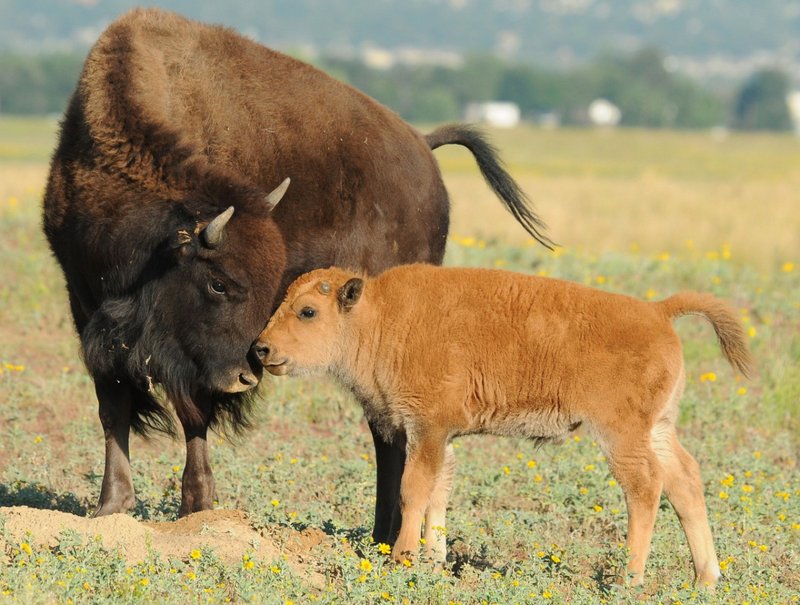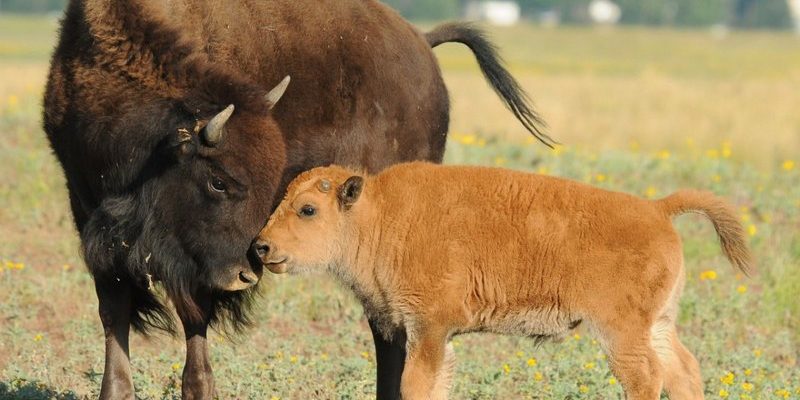
These gentle giants don’t just munch on grass; they also shape the very land they inhabit. Their hooves disrupt the soil and create wallows, which are shallow depressions used for bathing. This activity helps aerate the soil and even creates unique habitats for other species. You might be wondering why all this matters. Well, the American bison’s role is crucial not just for themselves but for countless other plants and animals that share their home. Let’s dig deeper into how the American bison contributes to its ecosystem.
Bison and Their Grazing Habits
One of the most remarkable things about the American bison is its grazing habit. These animals are herbivores, primarily eating grasses and sedges. By grazing, they help maintain the grasslands, keeping them healthy and vibrant. But it doesn’t stop there. When bison graze, they often eat select plants, allowing others to thrive. This selective grazing promotes biodiversity. Imagine a garden where some plants thrive because others have been trimmed back—this is similar to how bison interact with their environment.
Here’s the thing: when bison graze, they also naturally fertilize the land. Their droppings return nutrients to the soil, which helps plants grow. This symbiotic relationship between bison and plants is essential. It supports the entire food chain, from the smallest insects that feed on the grasses to the larger predators that rely on those smaller animals. In short, bison act like nature’s lawnmowers, ensuring that the grasslands remain diverse and healthy.
The Impact of Wallowing Behavior
Bison are known for their wallowing behaviors; they create depressions in the ground by rolling around. These wallows serve a couple of important purposes. First, they help bison keep cool during hot weather and protect their skin from parasites. But they also create unique microhabitats for other species. For example, the water that collects in these wallows can attract animals looking for a drink, while the disturbed soil can become a new habitat for plants and insects.
You might find it interesting to know that these wallows can remain in the landscape long after the bison have moved on. They can become vital spots for various organisms, from amphibians to birds, making them essential for biodiversity. It’s like turning a simple scratch in the dirt into a bustling hub of life.
Bison and Soil Health
Let’s talk about the soil itself. Bison significantly impact soil health through their grazing and wallowing. Their hooves break up the ground, which helps water permeate the soil more easily. This process can promote healthier root systems for grasses and other plants. Healthy soil absorbs more water, reducing erosion and allowing the ecosystem to thrive.
When bison graze, they also help maintain the grassland’s structure. You might think of soil as static, but it’s dynamic, continually changing. Over time, the actions of bison contribute to nutrient cycling, which is crucial for the resurgence of plant life after seasons or disturbances. This continuous process sustains the ecosystem over the long term.
The Role in Seed Dispersal
Interestingly, bison also play a role in seed dispersal. As they move across the landscape, they ingest seeds from numerous plants. When they defecate, those seeds are deposited in new locations, often in fertile areas enriched by the bison’s manure. This process helps to increase plant diversity and ensures the survival of various species.
Imagine a bison as a natural gardener, planting seeds wherever they roam. This unintentional act of gardening can lead to the growth of new plants, further enriching the ecosystem. Over time, such actions can lead to a healthier and more resilient environment.
The Importance of Bison Conservation
Given their crucial role, it’s easy to see why conserving the American bison is so important. Once on the brink of extinction, due to overhunting and habitat loss, concerted conservation efforts have helped their numbers rebound. Protecting bison means protecting the ecosystems they support.
Many organizations work tirelessly to ensure that bison can thrive in their natural habitats. From national parks to private ranches, efforts are being made to maintain and restore grasslands, allowing bison to roam freely. You might be surprised to learn that bison are not just important for the environment; they also hold cultural significance for many Indigenous peoples in North America. Their resurgence can help honor these connections and teach future generations about the importance of these majestic animals.
Bison as Keystone Species
The American bison is often referred to as a keystone species. This term means that their presence has a disproportionately large impact on their environment compared to their numbers. When bison are present in an ecosystem, they help maintain the balance and health of the entire community.
Without bison, certain plants might overgrow, leading to a decline in biodiversity. Similarly, other animals that rely on a diverse ecosystem may suffer. In essence, bison are like the foundation of a house—without a strong foundation, everything else starts to crumble.
The American bison is much more than just a large animal wandering the plains. Their role in the ecosystem is complex and essential. From grazing to wallowing, their actions help shape the land and support a rich tapestry of life. Conserving these incredible creatures isn’t just about saving a species; it’s about protecting an entire way of life for countless plants and animals.
As we look to the future, it’s vital to remember the lessons bison teach us about interconnectedness and balance in nature. By appreciating and understanding their role in the ecosystem, we can better protect not only the bison but also the beautiful landscapes they inhabit. So next time you think of a bison, remember the important role they play in their ecosystem—like nature’s own gardeners, architects, and keepers of balance.

